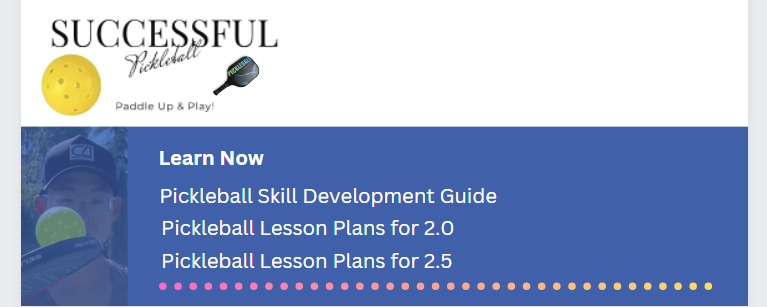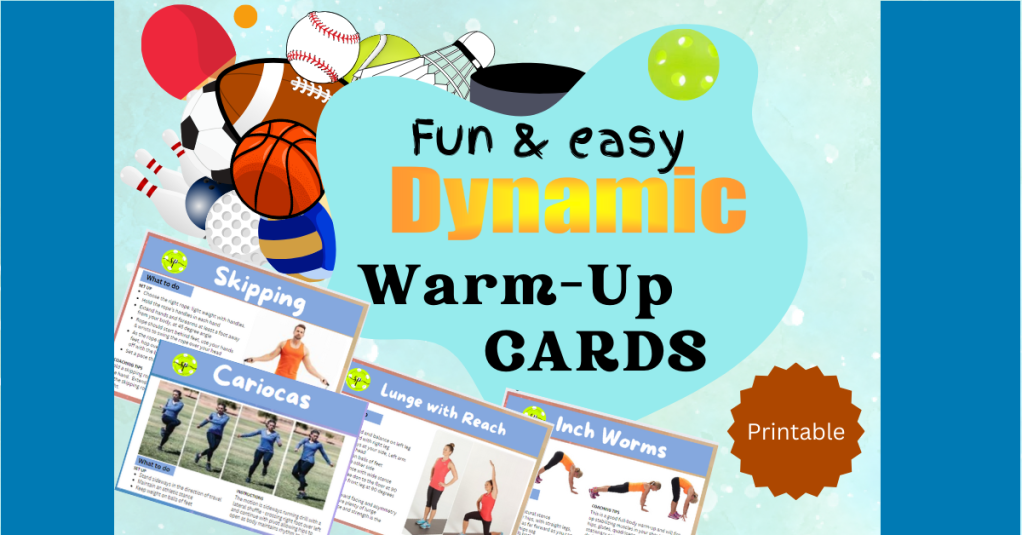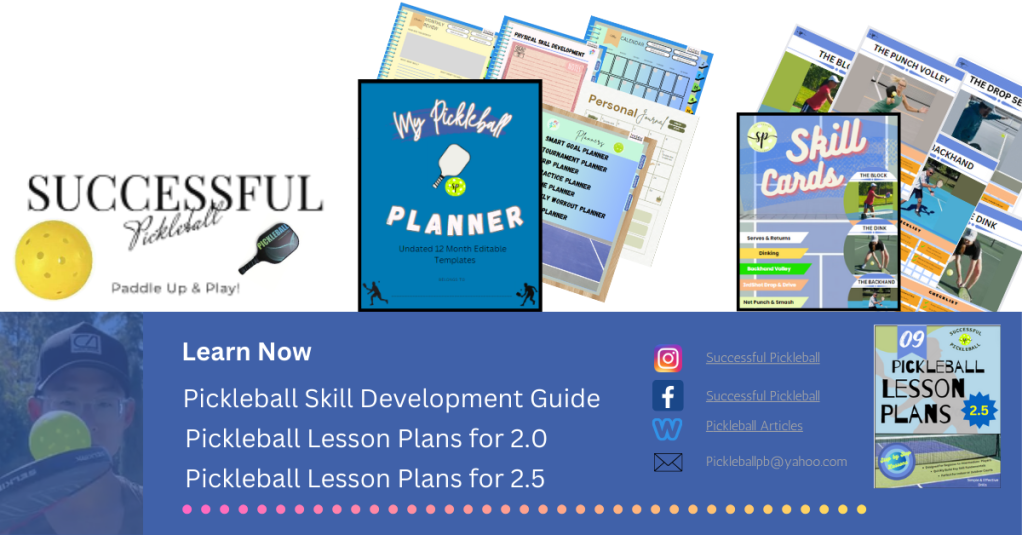The third installment of the fitness foundation to success will focus on the upper body. As we learned over the past 2 weeks, playing pickleball can utilize all the lower muscle groups and generate transferable energy through a kinetic chain to deliver balance, agility, endurance, speed, power, and core stability. When athletes train frequently it pushes the body to adapt to the demands of strenuous movement, which reduces the risk of sustaining injuries on the court. It is so important to warm up your body before any physical activities. Players will want to lubricate all joints and raise the body core temperature with dynamic movements before working out or playing a pickleball game. Remember to cool down post workout or match for your heart health and relaxation.
The Upper Body
The upper body training for pickleball is about functionality and conditioning with a long list of benefits. Not only does strength training for the upper body boost muscle strength and endurance while playing, it also helps burn calories, reduce risk of injury and builds stronger bones, according to Rebekah Miller, MS, CSCS, NASM-CPT.

In general, we will be looking at the muscle function during the pickleball volley – both forehand and backhand, while under different ball placement and speed conditions. A group of medicine and science in sport students, found that under different ball placement and speed conditions, various muscle groups of the arm, shoulder, (flexor carpi radialis, extensor carpi radialis, triceps brachii, deltoids) and the chest (pectoralis major) were engaged.

A recent trend in pickleball is the drive volley – a stroke technique adapted from tennis. Movements of the drive volley and groundstrokes are very similar, activation of internal muscles vary depending on ball conditions. In their study, the group of medicine and science in sport students investigated different muscle activation patterns in the upper extremities. The role of the pectoral muscles during the forward swing phase of the forehand drive volley was to move the arm and racquet forward during the swinging action.

The main muscle groups during a two-handed backhand drive volley also included the biceps brachii (BB), and triceps brachii (TB). In the upper body muscles of the back region, the trapezius and rhomboid muscles are part of the prime muscles used when hitting the ball as well. Finally, the last muscles used in the kinetic arm chain located are the deltoids, flexor, and extensor muscles.
Shoulder
The study observed that the deltoid (antero-middle and postero- middle) muscles were used to stabilize the shoulder joint prior to the drive volley. Moreover, the study also showed hitting the ball activates most of the muscles around the upper arms, chest, and shoulders including the rotator cuff, which is a group of four different muscles: the teres minor, infraspinatus, subscapularis, and supraspinatus between the arm bone and the shoulder blade.

Now, you may have heard of the group of muscles and tendons between the arm bone and the shoulder blade know as the rotator cuff. If you have ever had a dull ache in your shoulder or experience pain when lifting your arm, or have arm weakness, you may have a rotator cuff injury.
An upper body workout is best done with fewer repetitions and sets than the larger lower body muscles. Training the upper body muscles should mostly be focused on targeting individual muscles. Start out slowly and gradually increase the intensity as you build your strength. Engage the larger pectorals in the chest first before moving to the smaller deltoid muscle groups including the rotator cuff.
Before we go further, I want to mention that if you’re improving your grip as part of a strength training practice, you’ve come to the right place! We have a 6-week Pickleball Training Program that will walk you through every aspect of growing in your game!
We put a LOT of stress on our hands and wrists over the course of a pickleball game and not to mention over a weekend of tournament play, so lets take take care of your hard working extensor carpi radialis muscles! Read Can Pickleball Players get Tennis Elbow?
Wrist & Grip

As it turns out, the study revealed one major importance when it comes to the volley, wrist extension/abduction and grip strength through the extensor carpi radialis muscles was paramount. This muscle group is classified into a superficial layer and works in conjunction with the brachioradialis, extensor carpi radialis brevis, extensor digitorum, extensor digiti minimi and extensor carpi ulnaris. It also engages the Radial group, together with brachioradialis and extensor carpi radialis brevis1.
Together with the extensor carpi radialis, forearm extensors, extensor carpi radialis longus plays an important role in hand gripping. In pickleball, the ability to achieve an effective grip, the wrist must be maintained in an extended position by the forearm extensors, including the extensor carpi radialis longus.
What does all this mean? Wrist movement and wrist stability are the focus here. In order to be able to transfer energy from the body through the hands (for dinking, serves, volleys) players need to make sure every link in the chain is strong. When putting together a grip routine of your own, experts recommend cycling through different types of grips over the course of a week, in order to work different muscles and different angles. Out of the many variations out there, consider extension exercises as your main focus to keep your hands strong and healthy.
Keep in mind…
Although the movement begins in your legs and travels up through the core, your upper body is responsible for the final execution, placement, and follow through on the shot. A key thing to keep in mind, especially if you’re playing pickleball on a regular basis, is that pickleball naturally uses one side of the body more than the other. According to Miller, repetition builds strength in the dominant arm — aka the one holding the paddle — which is why it helps to supplement your pickleball game with some form of strength training while keeping in mind that the difficulty of each exercise and number of reps should be adjusted according to body size, age, and level of fitness.
Pickleball is a great for overall fitness. It is an enjoyable sport that invites socialization, tests physical strength, stimulates cognitive capacity, and your ability to deal with various game situations. It’s natural, the number of weekly off-court exercises increases or decreases depending on the level at which someone plays the game. Training, on and off court is crucial for maintaining balance, strength, and agility. It is strongly advisable fill out a PAR Q prior to any physical exercise, consult a medical expert, and warm up thoroughly before and after every game.
Next Time …
In the next article, we will go through some mental training exercises to use prior to tournament play and during tournament competition.

Please consider subscribing to my blog for more great pickleball content and make sure to follow me on Facebook and read my latest newsletter for some exciting news for the Spring 2023. Grab your dynamic warm-up exercise eBook as well, happy training!
Reference:











































